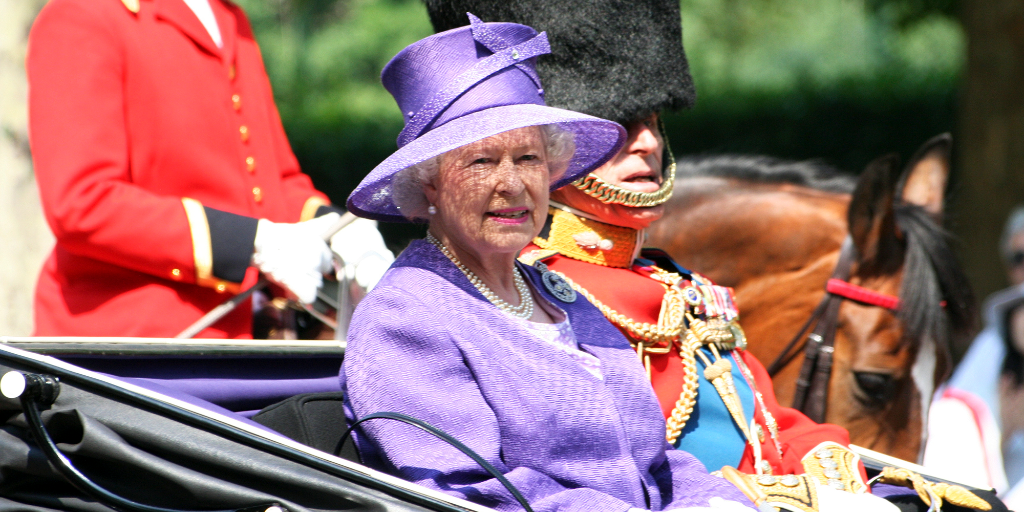Queen Elizabeth II’s long rule comes to an end
Lesson summary
Hi there, I’m Jeff and this is Plain English lesson number 506 for Monday, September 26, 2022. JR has uploaded the full lesson to PlainEnglish.com/506.
You’re learning English and there is nothing more English than the Queen of England. Elizabeth II died earlier this month at the age of 96, after serving as Britain’s monarch for seventy years. In today’s lesson, we’ll talk about how the news spread on the day she died. On Thursday, we’ll talk about the strange path she took to becoming queen. And in a future lesson, we’ll talk about what the world’s most famous monarchy might look like in the future.
In the second half of today’s lesson, I’ll show you how to use the English expression “pay respects.” And we have a quote of the week. Let’s get started.
Death of Queen Elizabeth II saddens Britain
It wasn’t a surprise, but it was still a shock.
At 6:30 p.m. on September 8, suited employees posted a framed, written announcement on the exterior gates of Buckingham Palace, in London.
The statement was two short sentences on a white page: “The Queen died peacefully at Balmoral this afternoon,” it said. “The King and The Queen Consort will remain at Balmoral this evening and will return to London tomorrow.”
The announcement began several official days of mourning, which ended on Monday, September 19, with the Queen’s funeral.
The Queen’s health had been in decline in recent years. At her Platinum Jubilee weekend earlier this year, celebrating 70 years of service, she was able to make only two very minor appearances on the balcony of Buckingham Palace. She had made limited public appearances over the last year, after doctors advised her to make lifestyle changes. She contracted, and recovered from, COVID-19 earlier this year.
She did, however, make the trip to the Scottish Highlands, where she traditionally spends the summer. But her mobility challenges prevented her from traveling to London to greet Liz Truss, the new prime minister who took over on September 6.
Traditionally, the monarch meets a new prime minister in Buckingham Palace in London; this time, the new prime minister traveled to Scotland to meet the Queen. Analysts say that the Queen’s health must have prevented her from traveling ; she would not otherwise have broken protocol, they believed. In the official photograph of the encounter, the Queen appeared frail, using a cane indoors and extending a bruised hand to greet the fifteenth prime minister to serve her.
The next day, she had to cancel a virtual meeting with the new prime minister. And then , early on the day of Thursday, September 8, Liz Truss was in the House of Commons. She presented a series of actions intended to ease the financial pressure on consumers from rising energy costs. Someone entered the chamber and passed a note to her and to the leaders of other parties. Shortly thereafter , the Speaker of the House told the members that the Queen’s health was in decline. The prime minister left the chamber.
At 12:30 in the afternoon, Buckingham Palace issued a statement saying that doctors were “concerned for the Queen’s health.” In the guarded language of official palace communications, this meant the end was near.
Members of the Royal Family rushed to Balmoral Castle, a sprawling estate in northern Scotland. Her children, Princess Anne, Prince Andrew, Prince Edward, and then-Prince Charles arrived to be with her. At 6:30 in the evening, her death was announced.
An hour later, Liz Truss, dressed in black, emerged from the prime minister’s official residence at 10 Downing Street. She said the queen was “the rock on which modern Britain was built.”
Britain was devastated. About eighty percent of the population has lived under no other monarch. Residents and visitors began to gather outside Buckingham Palace in London to pay their respects . One resident said she would cry all night. Another said she feared for Britain’s future, knowing the challenges the country faces without its stable leader of the last seven decades.
Upon Queen Elizabeth II’s death, her son, Charles, became king. He had the option to keep his name Charles, as his royal title, or to choose another from his full name, Charles Philip Arthur George. He decided to keep his given first name and he became King Charles III.
In a statement, the 73-year-old king said this was the moment he’s been “dreading,” but that he had to “keep everything going.” He returned to London to meet the prime minister and request ten days of official mourning.
On the Saturday after the Queen’s death, Charles was officially proclaimed King at St. James’s Palace. A coronation ceremony is considered a celebration and is not considered appropriate in a period of mourning. Therefore, the king’s official coronation ceremony will be months from now.
Britain has not transitioned from one monarch to another in 70 years; however, the process was carefully choreographed, following traditions that go back centuries. For most people alive today, it was the first time they saw a new monarch crowned in Great Britain.
A rainbow above Buckingham Palace
Rain in London on September 8 added to the gloom. But in the moments before the Queen’s death was announced, a double rainbow arced above Buckingham Palace and a Reuters photographer caught the rainbows on camera, behind two Union Jack umbrellas.
Great stories make learning English fun

